The Chronicles Of Georgia: A Collective Of HUGE Pillars Depicting The Life Of Christ And Ancient Georgian History
The Chronicle of Georgia is a massive and unique monument located on Keeni Hill near the Tbilisi Sea.
It’s a sight that stands out not only because of its size but also because of the rich history it represents.
Often referred to as the “Georgian Stonehenge,” this monument was designed by Georgian-Russian sculptor Zurab Tsereteli in 1985.
Though it was never fully completed, it remains one of the most impressive landmarks in Tbilisi.
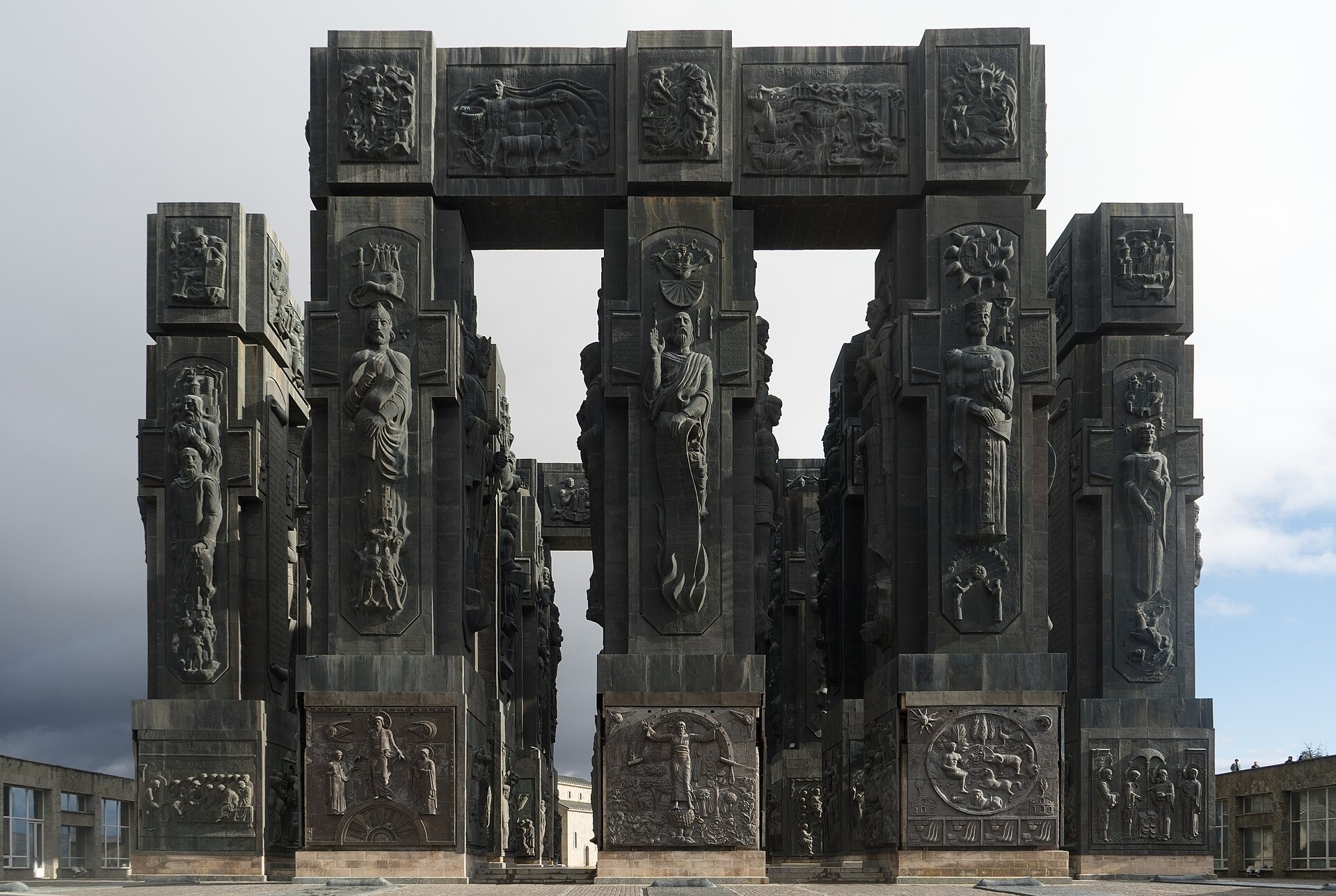
What is the Chronicle of Georgia?
The Chronicle of Georgia, often called “The Georgian Stonehenge”, or the “Stonehenge of Tbilisi”, is made up of 16 huge stone pillars, each standing between 30 and 35 meters tall.
The monument is located on a hill, providing a great view of the Tbilisi Sea and the northern part of the city.
The top half of the pillars features carvings of kings, queens, and heroes from Georgia’s history, while the bottom half shows scenes from the life of Christ.
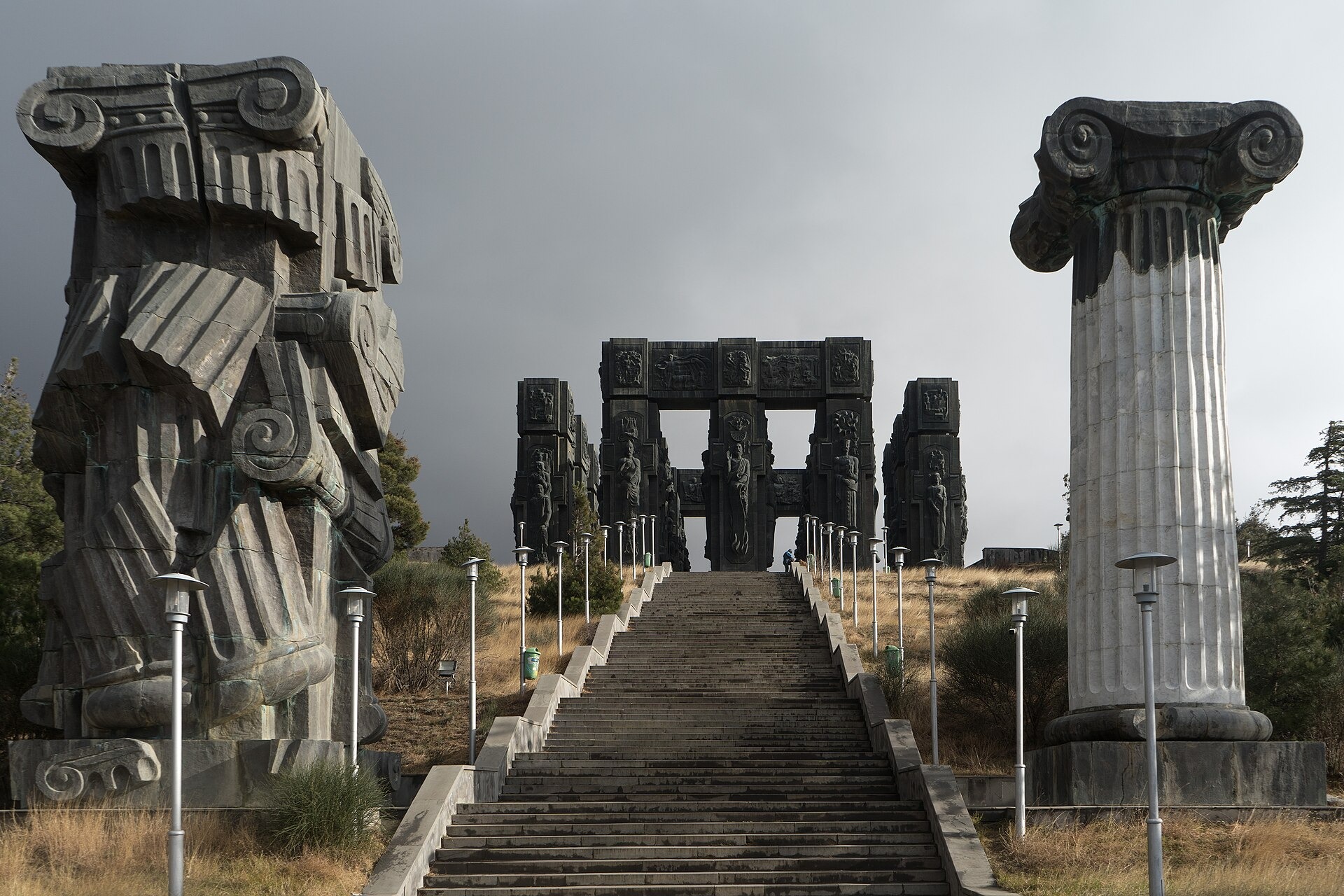
In addition to the pillars, there is also a small chapel and a grapevine cross next to the monument.
The grapevine cross is a symbol of Saint Nino, who is known for bringing Christianity to Georgia in the 4th century.
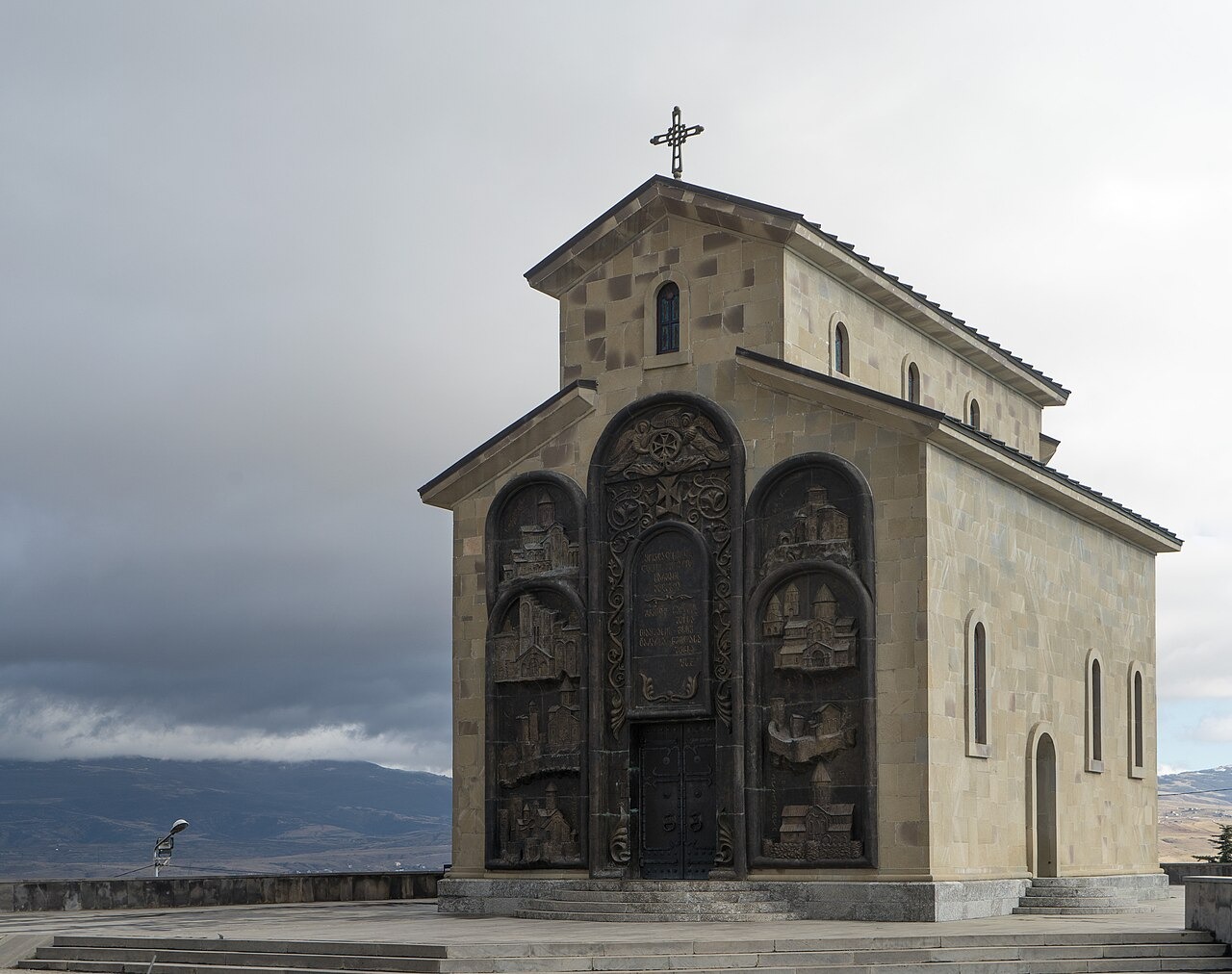
A Glimpse into Georgian History
The Chronicle of Georgia serves as a physical representation of the nation’s 3,000-year-old history.
The carvings on the pillars show important moments from the past, from the settlement of the earliest human, Homo erectus, in the Paleolithic Era to the advent of agriculture and pottery.
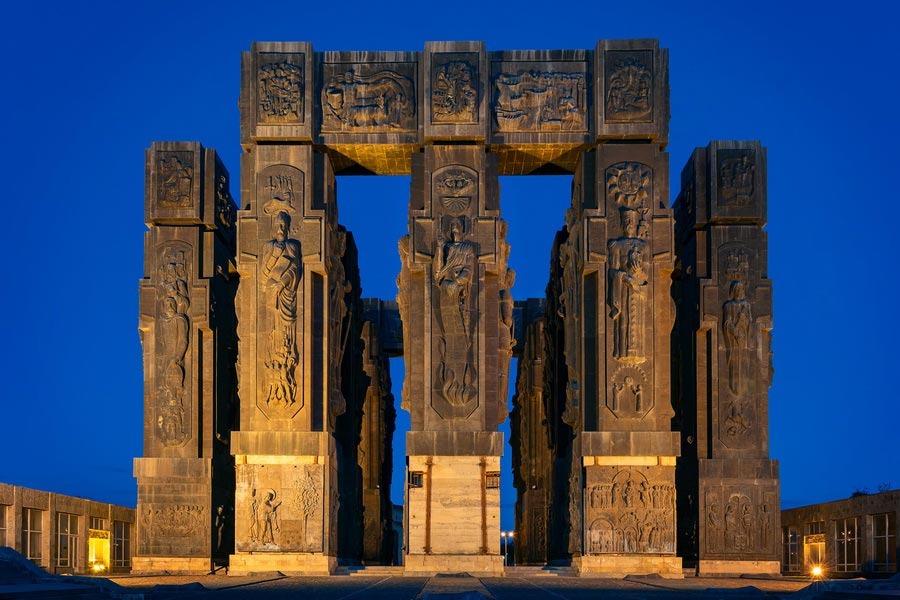
Georgia is known as one of the oldest Christian countries in the world, with Christianity becoming the state religion in 337 AD.
The monument reflects this religious history by depicting the life of Christ on the lower part of the pillars.
The spread of Christianity had a huge impact on Georgian culture, including the development of literature and arts.
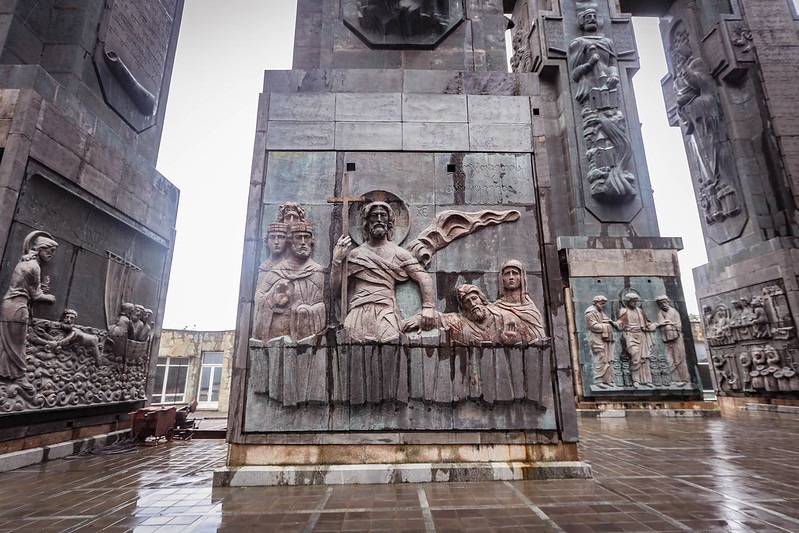
Who is Zurab Tsereteli?
Zurab Tsereteli, the sculptor behind the Chronicle of Georgia, was born in Tbilisi in 1934.
He is known for creating large-scale monuments all around the world.
After studying at the Tbilisi State Academy of Arts, Tsereteli embarked on a career that saw him create numerous significant works, including the Friendship Forever monument in Moscow.

Tsereteli began working on the Chronicle of Georgia in 1985, during the Soviet era.
However, the collapse of the Soviet Union in 1991 led to a lack of funding, and the monument was never fully finished.
Tsereteli’s work on the Chronicle is a great example of Brutalist architecture, a style known for its large, block-like structures and raw, concrete forms.
Even though the monument is not complete, its massive size and bold design make it a powerful symbol of Georgia’s history.
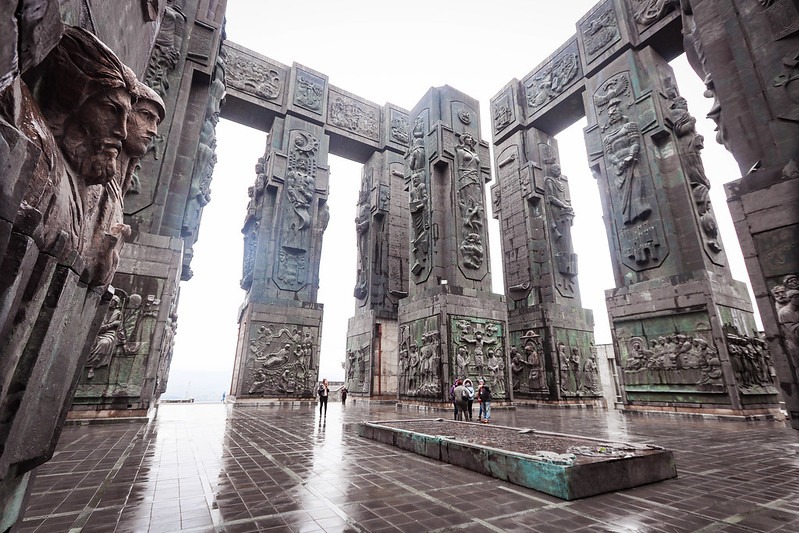
Visiting the Chronicle of Georgia
If you visit the Chronicle of Georgia, you’ll need to climb a large set of stairs to reach the top, where the monument is located.
Once there, you’ll be rewarded with stunning views of the Tbilisi Sea and the surrounding area.
The Tbilisi Sea, an artificial lake built in 1953, is a popular spot for locals and visitors alike.
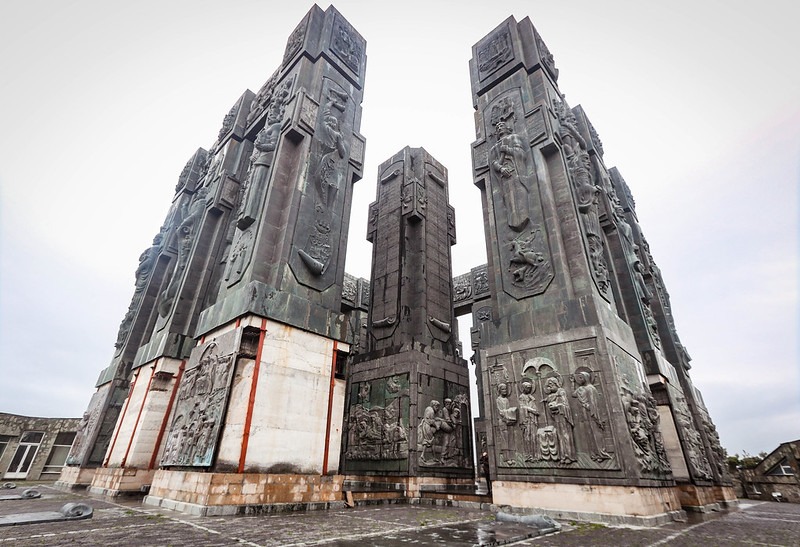
As you explore the monument, take time to look at the detailed carvings on the pillars.
Each one tells a story from Georgia’s past, from its ancient kings and queens to the life of Christ.
The small chapel next to the monument is also worth a visit.

